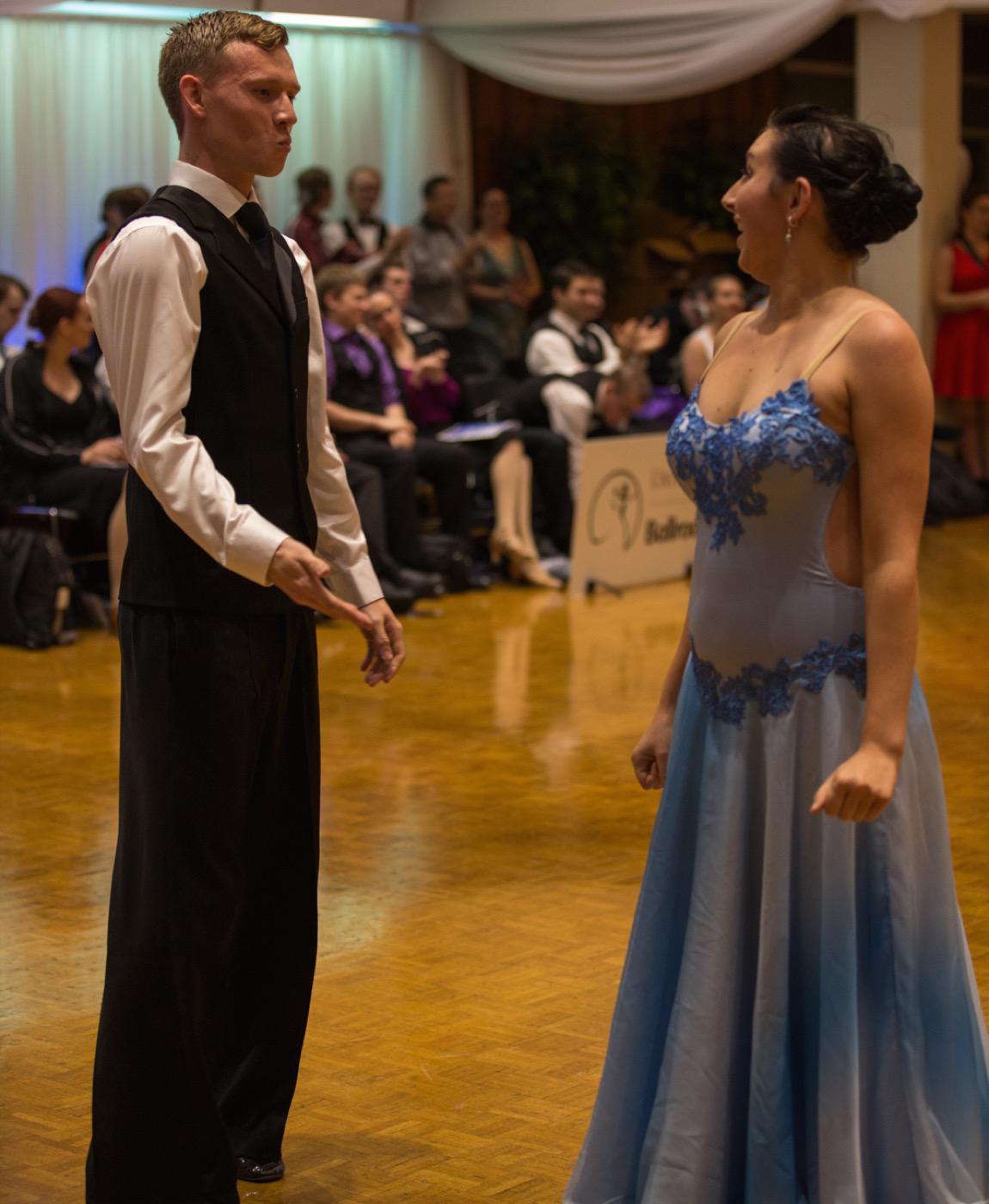Gaining Perspective
Sexism in Ballroom Dance
By Joel Torgeson

Is ballroom dancing inherently sexist? If so, can anything be done?
Few questions trouble me more as a person who thinks of himself as a feminist and an anthropologist. It truly is an elephant in the ballroom; it can be hard to get people to discuss it frankly.
My real question here, the one I doubt I’ll be able to answer over the course of this article, is this: as society gallops (or crawls, depending on your points of reference) towards a more open, accepting, (hopefully) less stereotyped existence, does ballroom run the risk of turning into a Civil War reenactment or a bastion of latent heteronormativity and sexism?
That is both a mouthful and a tall order. I can’t hope to cover it all in one article, but I’ll offer up a few musings on it in hopes that this will encourage further discussion of the issue. Only by talking about issues like this can we hope to resolve them in any meaningful way.
First, context must be established. Ballroom dancing (or partner dancing more broadly) has certainly been largely a heteronormative, sexist activity in the past. You need look no further than the language that is used in most manuals for dancing; everything is described in terms of men’s and women’s parts, and indeed makes it rather clear what is expected to be the dominant role in the partnership. Strong boundaries are implicitly (and at times explicitly) constructed around what is normal behavior for men and women. More so, the sport’s general aesthetic hearkens back to what I see as a 1950s ideal, with men in suits and women in dresses. Read the USA Dance rulebook—it regulates the cut of a woman’s neckline, among other things, rearing slut-shaming’s ugly head and enforcing the binary norm.
Second, nobody lives in an objective vacuum. We have all been brought up to think a certain way, and this has shaped (and been shaped by) our experiences in the world. Every time I walk down the street and put people I’ve never met into male and female categories in my mind, I’m relying on patterns and subroutines deeply ingrained into my identity in order to do it. These snap classifications, based on generalizations, don’t capture the diversity of gender identities experienced by humanity. Subconscious pattern recognition and application downsample our world into less colorful, lower-resolution understandings of how the world works.
This impulse is not an inherently bad thing, however. If you had to consciously, deliberately think through every decision you made each day, you’d never make it out the door for work. Pattern recognition has allowed humans to adapt to new environments, predict everything from weather to crop seasons, and continues to drive our thirst for knowledge today. Put simply, we like patterns. We don’t like things that deviate from the patterns (unless, of course, they produce a newer, more elegant pattern).
Third, let’s just end the Ginger Rogers/Fred Astaire debate here and stipulate that leading and following take equal amounts of skill and effort in order to be properly performed—equal as in they would balance on a set of scales, not that they would both fit through the same-shaped hole. Leading and following are clearly different in some ways, but I think on the whole we can agree that they’re equally important for successful dancing, equally dependent on skill and technique, and equally deserving of respect.
So is ballroom dancing, at its core, sexist? This will probably depend on the way you see many different things. The pattern, which we’re all fully aware of, is that men tend to lead women; men wear suits and women wear dresses; women wear high heels; etc. This is the well-defined norm for ballroom.
But are men and women different enough to justify these divisions? Imagine, if you can, a world with no societies and thus no cultural or moral imperatives to operate on (hint, this is nearly impossible, given none of us can escape our identities). Now plop a man and a woman into this world on a dance floor and ask yourself if there is anything about them that should predict one for leading and the other for following. Trouble this further by challenging your assumptions about what it is to be male or female. We tend to be very good at knowing what a stereotypical gender looks like (or at least what we believe it does) and ignoring the continuum of gender that really exists. Can’t hold all of that in your mind at once? Neither can I, and that should give you some idea of why these issues are so hard to tease apart.
Biology can help us out a little here. Exploring the reproductive benefits of different strategies for males and females (and more importantly, their genes) suggests different behaviors for different sexes do make some sense. Males tend to have more testosterone, more muscle mass, and, interestingly, better spatial awareness. Females tend to outrank in multitasking, social skills, and communication. Overall, the degree of sexual dimorphism (percent anatomical difference between sexes) in humans is relatively low, though not as low as that of solidly monogamous mammal species. That is a discussion for another day, however.
Does any of this biological evidence provide a good reason for men leading and women following? Not really. Marginally, you could argue that spatial awareness might make leading a touch easier, but that same logic might lead us to believe that all politicians should be women, with their enhanced social and communication skills. I’ll always advocate for a nice fifty-fifty gender split in politics, so why is it so hard for me to suggest the same in dancing?
So does ballroom dancing necessarily involve the one-man-one-woman pattern we so often see? No, of course not. But it usually does, and that’s where it gets difficult. Do we categorize ballroom dancing as between men and women or leads and follows? Same-sex competitions exist, to be certain, but separate-but-not-equal looms large over that debate. You can argue that the art form is meant to express traditional roles of men and women, but if the history is steeped in sexism and heteronormativity, can we be traditional without perpetuating the faults of the tradition? Is the man-woman paradigm so ingrained in ballroom culture that any departure from it will be seen as no longer ballroom dancing but something else instead?
What do you think? I certainly don’t have all the answers, and I’m always interested to hear what people have to say about controversial topics like this. I’ll leave the discussion here for now, but I’ll be back in a future piece. Send me an email if you have any thoughts on the matter to share. Better yet, write an article for Sheer Dance, and let’s discuss!
